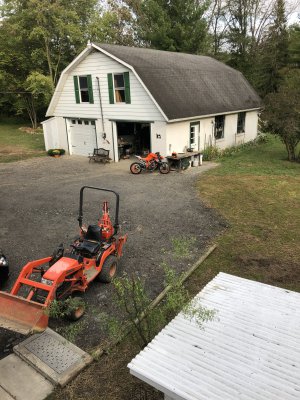My shop is 32' x 40' with a 10' ceiling. Walls have 8" of insulation, 12" in the attic. I went with a Mr. Heater Maxx 125,000 BTU propane unit, rated for ~3300 sq. ft. I could have gotten away with a 55,000 or 85,000 unit, but went with the 125,000. I leave the shop at 40 F. The heater is hooked to a Google Nest thermostat which lets me kick the heat on remotely. That's not much of an issue with the overkill on the heater; it'll heat the shop from 40 F to 55 F in 10 minutes.
The heater is in one corner of the shop and blows across the room. There are 3 ceiling fans on the opposite side that blow air up at their lowest setting. I initially had the ceiling fans on high but felt the cool breeze when working at the far wall. My shop has a clock/thermometer about 8' high on the wall opposite the heater. The thermostat is on an adjacent wall about 4' high. When the heater kicks on, the air by the thermometer is about 5 F warmer than the thermometer. Once the heater kicks off it only takes a few minutes for the ceiling air temp to match the thermostat. I was surprised how little air movement was needed to normalize the temp.
The overhead heater is not annoyingly loud, but loose papers on my workbench go for a ride when the fan kicks on. A couple of threads with my installation are below.
Bruce
That's what we do , and that's what we are . :big grin: @Firstram. I appreciate that. I do believe that you have to be a few fries short of a happy meal to have that many chucks tho.

www.hobby-machinist.com
POTD was done yesterday; ironically “spring time” on the first day of summer. My wife has a coworker who bought a KitchenAid mixer that is missing a spring at the mixing head (for securing attachments). He found a replacement spring on line for $35 and was complaining about the cost. We have the...

www.hobby-machinist.com



